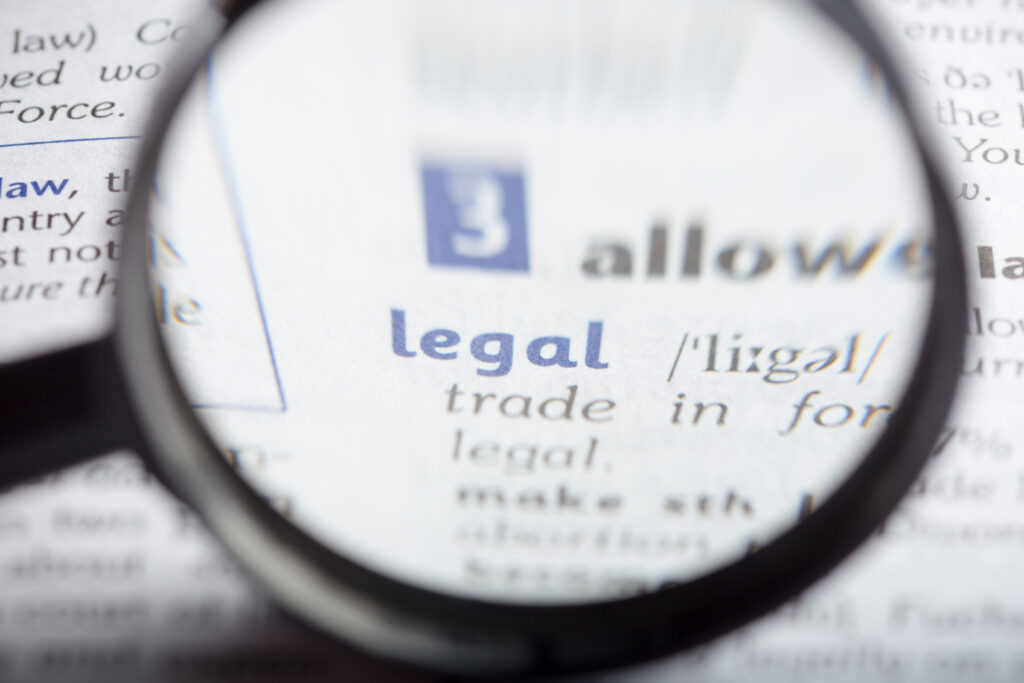Why do we even need to automate commercial contracts? The way we are doing business has been slowly changing over the years. Contract management used to be a corestone of doing business, but not anymore. SaaS platforms came to take over the automatic and routine tasks. The way companies handle contracts looks very different. These tools reduce administrative strain, improve visibility, and help businesses move faster.
For organizations looking to integrate legal robustness with tech efficiency, aligning with a law firm in Ringwood can help navigate the complex intersection of SaaS and legal compliance.
But the legal side still matters. It matters even more. Automation with no supervision and compliance considerations only leads to costly mistakes. We still need to understand how to use SaaS responsibly and securely – that’s the absolute priority. So stepping forward, let’s find a way for you to incorporate contract automation while keeping its legal footing.

Why SaaS Tools Are Gaining Ground in Legal Ops
SaaS is yet to come to its peak of popularity. More and more businesses adopt that approach every day. Some finance apps are already exploring this concept through blockchain and digital automation. They turn to SaaS solutions for everything, the entire contract lifecycle: drafting, negotiation, approval, signing, and storage. We have tools like Juro and ContractPodAi to help us streamline this offering their ready-made templates, audit trails, change tracking, and secure storage.
Businesses get rid of repetitive tasks, cut turnout times. Our teams have real-time access to contract status. For teams, dealing with multiple contracts at once, these tools free up hours each week and are a huge productivity boost. The advantages are obvious, but are the risks?
Adopting SaaS in legal operations comes with workflow adjustments. It also requires a legal strategy, to support those innovations. For UK-based businesses there’s TechUK, which offers guidance on the matter.
Legal Considerations You Can’t Ignore
Automation doesn’t mean bypassing regulation. One of the most immediate legal concerns is data protection.
Contracts obviously are very data-sensitive. Management of delicate personal and business data has to comply with UK GDPR standards. The Information Commissioner’s Office (ICO) publishes guidance concerning UK businesses. It’s totally worth consulting before rolling out any new platform.
What else is affected by the changes? Jurisdiction is often overlooked in discussion. SaaS providers may operate across borders, but contract disputes still need to follow specific laws. Here rises the question as to which legal system governs your arguments. Make sure your platform states those terms clearly.
Without a proper plan, you can’t be sure what gray legal areas you’ll be dealing with, if something goes wrong. So do yourself a favor and don’t let this small detail slip.
Don’t Let Automation Replace Legal Oversight
Finally, don’t fall for total automation to gain speed. Speed is great, but not at the cost of quality. Enterprise AI assistants are already helping flag contract expirations and compliance gaps. SaaS tools are designed only to take over the repetitive, brain-dead tasks. They need human supervision to contribute critical thinking. While a clause may look legally valid, it still carries the risk.
This is the point past which you can’t go without human judgement. As a reference, any contract involving:
- A large financial commitment
- A cross-border agreement
…should trigger a manual review step by default. Some platforms offer approval workflows that allow you to add this layer of control. Use it.
Templates and AI-powered suggestions can be helpful, but they’re not foolproof. Even clause libraries built into the software should be vetted by your legal team—especially if you’re operating in highly regulated industries like healthcare or finance.
The goal here isn’t to automate everything. It’s to automate what makes sense and build guardrails around the rest.
What SaaS Platforms Get Right
Used well, SaaS contract management offers measurable advantages. The biggest benefit is speed. Drafting and executing contracts through a centralized system speeds up deal cycles and reduces errors.
Standardised templates improve accuracy. Version control keeps records clean. Features like e-signature and automated reminders ensure things move forward without bottlenecks.
For businesses that need to maintain a clear audit trail, SaaS also delivers on that front. Every edit, comment, and signature is logged—making it easier to prove who agreed to what, and when. The Chartered Institute of Procurement and Supply (CIPS) also recommends digitized contract practices as a best-in-class approach across sectors.

Choosing the Right Platform for Your Business
Not all contract platforms are created equal, and the wrong choice can become a liability. Before adopting any tool, take a close look at how your current workflows operate. Ask yourself:
- Where do things slow down?
- Where are mistakes happening?
That’s where automation should start.
You’ll also want to assess whether the platform aligns with UK data protection law. Ask vendors:
- Can it integrate with your existing systems like your CRM or accounting tools?
- Does it support real-time collaboration and enforce user permissions?
It’s not just about features. Security matters too. The National Cyber Security Centre (NCSC) has solid resources for SMEs evaluating SaaS vendors. Use those to guide your vendor due diligence.
You should also consider scalability. Your contract volume and complexity will likely grow over time. Look for platforms that offer:
- Flexible integrations
- Workflow customization
- User access controls
You want something that can evolve with your business—not something you’ll have to replace in two years.
Read the Fine Print: Vendor Agreements Matter
Before you even start uploading contracts to a SaaS tool, check the vendor’s own terms of service. Service level agreements (SLAs), data ownership, liability clauses, and uptime guarantees all deserve a close look.
Key questions to ask:
- If the tool fails or suffers a breach, who’s responsible?
- What if the platform misrepresents a clause or contains outdated legal content?
Some vendors may include broad disclaimers that shift all legal risk to you. That’s not acceptable if you’re depending on the tool to power your legal processes.
You should also confirm that your data is portable. If you leave the platform, can you take all your documents and metadata with you in a usable format?
And don’t skip the details on service downtime. Even a few hours of lost access could disrupt operations or delay key agreements. If contracts are core to your business, negotiate uptime requirements and penalties in advance.
Keeping Your Workflows Legally Sound
Implementation is just the beginning.
Build Legal Into the System, Not After It
Automation can’t protect you from legal risk unless it’s designed with governance at its core. That starts with assigning ownership. Someone—ideally your legal lead or compliance officer—needs to be responsible for managing updates, monitoring policy shifts, and maintaining workflow integrity across the board.
Templates aren’t “set and forget.” Laws evolve, and internal standards do, too. Schedule regular reviews. It’s the difference between staying compliant and slowly drifting into risk without noticing.
Then there’s training. Even the most advanced system fails when the people using it don’t know what it’s for—or what it isn’t. Your team needs more than a login. They need to grasp the limits of automation, recognize where legal input is still critical, and know when to slow down for a second opinion. Misuse isn’t always malicious—often it’s just unclear guidance. Keep documentation precise, current, and easy to navigate. That’s what makes decisions consistent. That’s what makes them defensible.
Use them as extensions of your legal strategy, not shortcuts around it.

The Rise of Legal Tech: Smart Contracts and AI
Looking forward, expect smart contracts and legal AI to shift how contracts are created and enforced. Automated execution, real-time risk flagging, predictive legal outcomes—it’s all on the horizon. Some of it is already here.
But none of these tools eliminate the need for legal judgment. Smart contracts must be enforceable under actual law, not just functional on-chain. AI can surface patterns, but it can’t interpret business nuance or intent. Not yet.
If you’re integrating these systems, position them as support—not substitutes—for legal expertise.
Why Legal Partnerships Still Matter
Automation doesn’t replace legal counsel. It changes how legal teams operate. A legal partner should be part of the build, not just the cleanup. Digital contracts come with real-world consequences. Startups, in particular, face unique legal hurdles when scaling SaaS operations. Laws change. Mistakes happen. So do disputes. Someone needs to keep your templates aligned with current regulations and step in when the unexpected hits. Without legal structure in place, even minor issues can spiral fast.
Move Forward. Stay Grounded.
Automation can improve how contracts move through your system. It can reduce human error and tighten up your processes. But legal strength still holds everything together. Your choice of tools, how you configure them, and how you document each decision will determine whether the system holds up under scrutiny.
Automation should support your legal framework. It should make good practices easier to maintain. If you’re unsure about compliance, get legal involved early. It’s far easier to prevent problems than to untangle them later.
Note: This content is for informational purposes only. For guidance specific to your business, speak with a qualified solicitor.
- Top 10 Best Sites to Buy Quora Upvotes - September 3, 2025
- How New Technology Is Changing the Face of Customer Support - August 18, 2025
- How SaaS Tools Are Streamlining Contractor Operations - August 14, 2025


